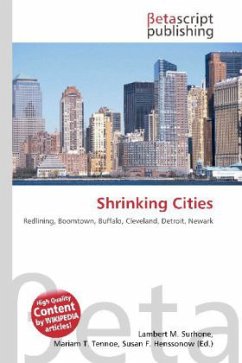Please note that the content of this book primarily consists of articles available from Wikipedia or other free sources online. The current population of the world is 6.5 billion people. Currently about 3 billion live in cities. By 2030, population in cities is expected to be 4.1 billion. Though some cities are continuing to attract residents, others are losing residents at varying rates. Saskia Sassen''s "global cities" theory forecasts these urban "winners" and "losers": the winners being those cities with agglomerated financial and specialized services and the losers being those with outdated industrial infrastructure and manufacture economies. In the last 50 years, about 370 cities with more than 100,000 residents have undergone population losses of more than 10%. More than 25 percent of the depopulating cities are in the United States, and most of those are in the midwest.
Bitte wählen Sie Ihr Anliegen aus.
Rechnungen
Retourenschein anfordern
Bestellstatus
Storno








